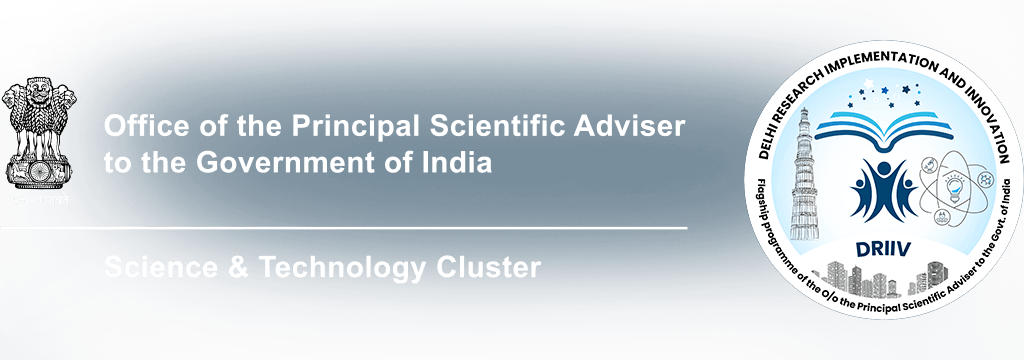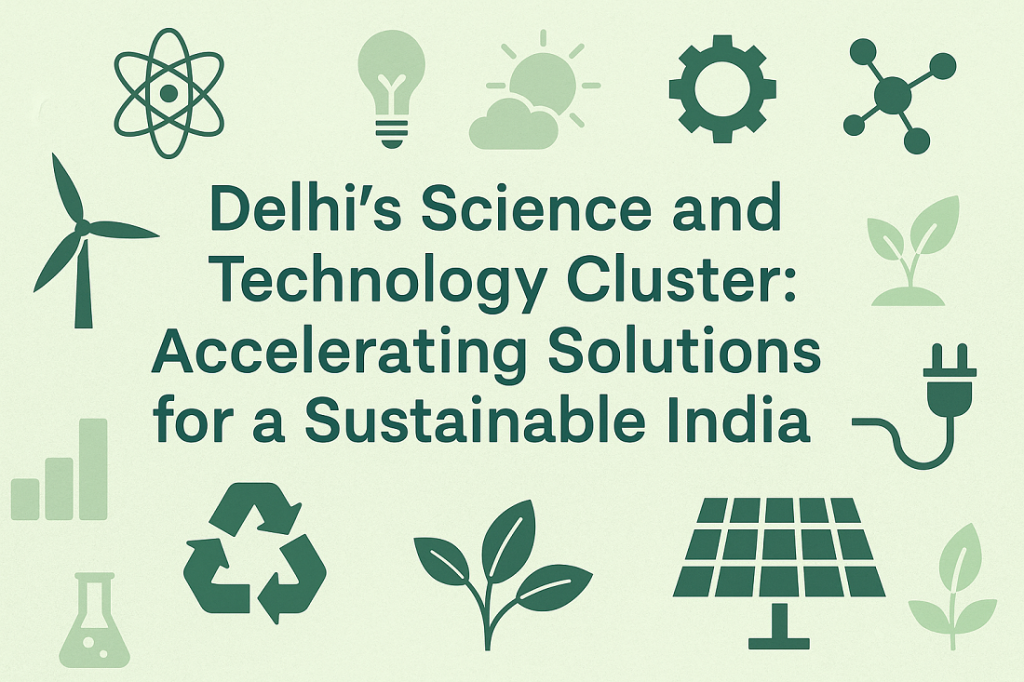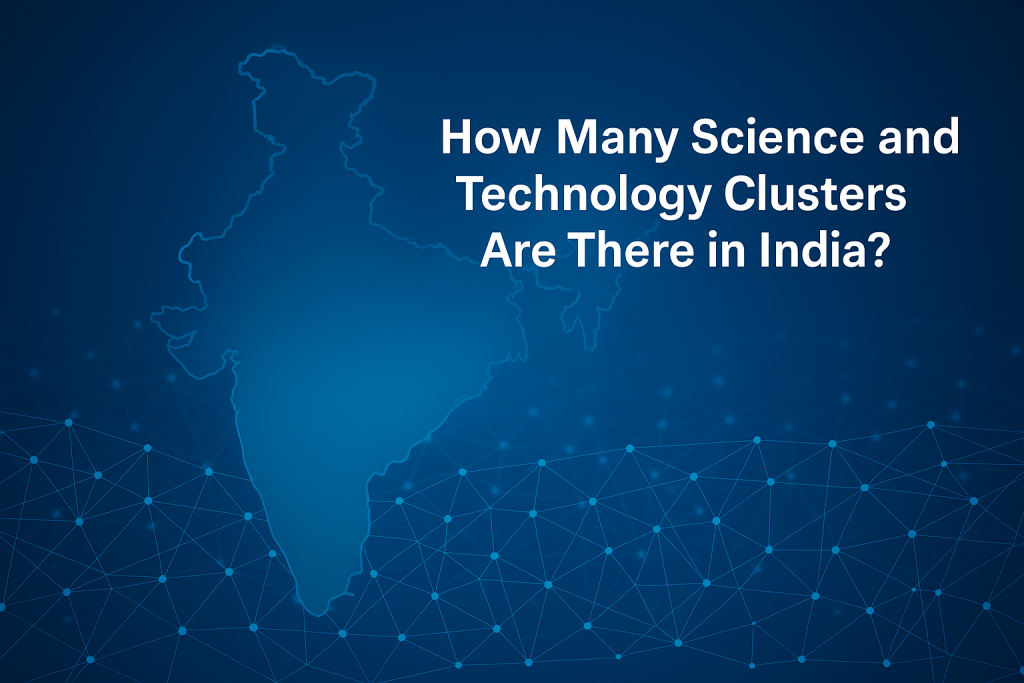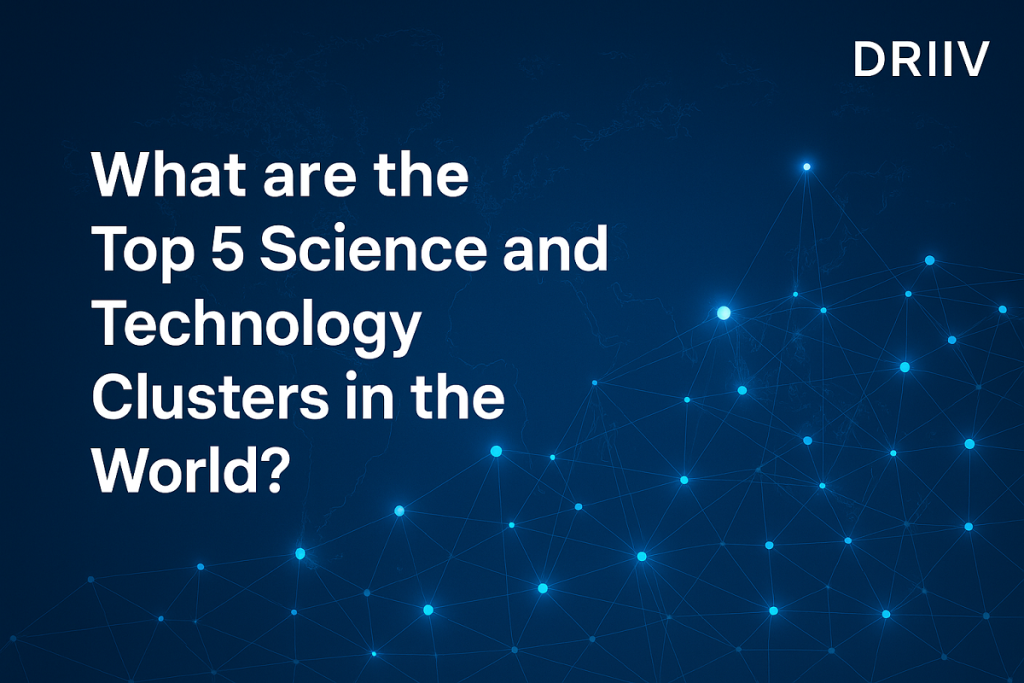India is on a fast track to becoming a global leader in innovation, research, and sustainability. One of the most powerful forces driving this progress is the Science and Technology Cluster (S&T Cluster) model. In Delhi, this movement is gaining remarkable momentum, offering hope for a cleaner, smarter, and more AtmaNirbhar Bharat (self-reliant India).
At the heart of this transformation is DRIIV (Delhi Research Implementation and Innovation), a leading Science and Technology Cluster working on solving India’s biggest challenges through innovation and collaboration. From environmental sustainability to digital healthcare, DRIIV’s work reflects the power of partnerships between academia, research institutions, startups, and industry.
Let’s explore how the S&T Cluster model in Delhi is making India more sustainable, resilient, and future-ready.
What is a Science and Technology Cluster?
A Science and Technology Cluster is a collaborative ecosystem where multiple institutions work together to solve real-world problems. These institutions include:
- Research labs
- Universities and academic centers
- Government bodies
- Startups and private companies
- Non-profit organizations
The main aim of an S&T Cluster is to move research from labs to the ground – transforming ideas into impactful, scalable sustainable technology solutions. By sharing knowledge, infrastructure, and resources, these clusters ensure faster innovation and real-world impact.
Why Delhi Needs a Strong S&T Cluster
Delhi, being the capital and a rapidly growing urban center, faces unique challenges such as:
- Air pollution
- Traffic congestion
- Water scarcity
- Health infrastructure gaps
- Waste management
To overcome these challenges and build a sustainable India, a coordinated approach to research, innovation, and implementation is essential. That’s where DRIIV, Delhi’s own Science and Technology Cluster, comes in.
DRIIV: Powering Change Through Innovation
DRIIV (Driven by Research and Innovation in India Vision) is a mission-driven initiative supported by the Office of the Principal Scientific Adviser to the Government of India. DRIIV works as a nodal S&T Cluster for Delhi NCR, focused on solving problems in key sectors such as:
- Clean energy
- Healthcare
- Mobility
- Environmental management
- Water security
- Education technology
DRIIV’s approach is simple yet powerful: identify real problems, co-create technology-based solutions, and implement them at scale. The goal is not just innovation, but sustainable technology solutions that serve society, empower communities, and align with the vision of AtmaNirbhar Bharat.
Key Focus Areas of DRIIV
1. Environmental Sustainability
DRIIV works with partners to implement innovative solutions in:
- Air pollution control using IoT and sensor networks
- Wastewater treatment using green technologies like phycoremediation
- Solid waste management using AI and robotics
- Plastic waste recycling with decentralized systems
These solutions are being deployed across schools, hospitals, and urban communities to make cities healthier and greener.
2. Healthcare for All
India’s healthcare system needs modern, scalable, and affordable solutions. DRIIV supports:
- Digital health monitoring tools
- Mobile diagnostic labs
- AI/ML-based disease prediction systems
- Public health data platforms
These efforts improve early diagnosis, better reach in rural areas, and faster response in emergencies.
3. Green Mobility
To reduce Delhi’s dependence on fossil fuels and control pollution, DRIIV is promoting:
- Electric vehicles (EVs)
- Renewable energy integration in transport
- Smart traffic solutions
These solutions promote energy efficiency and are crucial to creating a sustainable India.
4. Water Security
Water pollution and shortage are urgent problems. DRIIV’s work includes:
- Monitoring of water bodies using drones and sensors
- Eco-restoration of lakes and rivers
- Deployment of low-cost water purification units
- Real-time water quality data platforms
This ensures better sustainable water management and strengthens Delhi’s resilience.
5. AtmaNirbhar Bharat through Innovation
DRIIV supports startups, local innovators, and MSMEs to build indigenous tech solutions. This aligns with the Government’s goal of AtmaNirbhar Bharat by:
- Reducing dependency on imports
- Boosting local innovation
- Creating jobs and IP in India
From 3D bioprinting to nanotechnology in agriculture, these solutions are world-class and made in India.
The Power of Collaboration
One of the biggest strengths of the Science and Technology Cluster model is collaboration. DRIIV connects:
- IIT Delhi
- AIIMS
- CSIR labs
- Ministry of Science & Technology
- State pollution control boards
- Smart City projects
- Local communities
This joint ecosystem makes sure every innovation is user-centric, scalable, and sustainable.
Impact So Far
DRIIV and the Delhi S&T Cluster have already made measurable impact:
- 100+ startups supported
- 20+ pilot projects implemented
- 5+ water bodies revived using eco-solutions
- 500+ air quality sensors installed in schools
- Smart mobility solutions adopted by local authorities
These successes prove that sustainable technology solutions are not just theory—they work when deployed with the right partnerships.
The Road Ahead: Scaling for a Sustainable India
DRIIV’s next goal is to scale these innovations across India. Other regions can replicate the S&T Cluster model to address their unique challenges. The key lies in:
- Strengthening government-academia-industry ties
- Focusing on technology that solves local problems
- Ensuring affordability and inclusion in every solution
- Monitoring and impact assessment to guide future action
As India moves towards Viksit Bharat 2047, the role of Science and Technology will be more crucial than ever. With clusters like DRIIV leading the way, India can become a global leader in sustainability and innovation.
Why S&T Clusters Matter for India’s Future
Science and Technology Clusters are not just about research – they are about implementation and impact. For a country as vast and diverse as India, centralized solutions may not always work. Clusters like DRIIV provide:
- Localized innovation
- Faster technology deployment
- Cost-effective solutions
- Better policy inputs from ground-level data
By empowering local stakeholders, clusters make the national mission of AtmaNirbhar Bharat a reality.
Conclusion
Delhi’s Science and Technology Cluster, led by DRIIV, is proof that when great minds work together, powerful change happens. From pollution to public health, mobility to waste, the S&T Cluster model is solving the biggest challenges of our time.
As we move forward into a future shaped by technology and sustainability, clusters like DRIIV will continue to play a key role in building a Sustainable India—one innovation at a time.
Let’s support and scale these efforts to ensure a greener, smarter, and more resilient India.
FAQs
Q1. What is a Science and Technology Cluster?
A Science and Technology Cluster is a network of academic institutions, research labs, industries, and government bodies working together to create and implement technology-based solutions for real-world problems.
Q2. How is DRIIV contributing to sustainability in India?
DRIIV is developing and implementing solutions in air pollution control, clean mobility, water security, digital healthcare, and waste management. These innovations are aimed at creating a sustainable India.
Q3. What does AtmaNirbhar Bharat mean in the context of technology?
AtmaNirbhar Bharat means building local capabilities in research, innovation, and manufacturing so India can become self-reliant and globally competitive, especially in critical sectors like energy, health, and digital infrastructure.
Q4. Who are the partners in DRIIV’s Science and Technology Cluster?
Partners include IIT Delhi, AIIMS, CSIR, various ministries, state authorities, Smart City projects, startups, and NGOs.
Q5. How can I be part of the S&T Cluster ecosystem?
You can participate as a startup, researcher, policymaker, or even a citizen by joining programs, pilots, or innovation challenges run by clusters like DRIIV. Visit DRIIV website to learn more.




